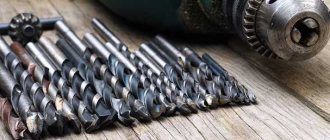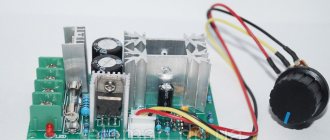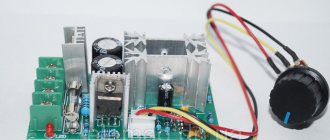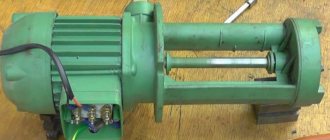Choosing the right clamp meter often raises many questions. The multi-function tool is capable of measuring AC or DC current, resistance, voltage and other parameters. To understand the features of different models, their pros and cons, our editorial experts have compiled a rating of the best current clamps for home or professional use.
Structurally, many models resemble a conventional multimeter, but surpass them in their capabilities:
- Measurement without breaking the circuit;
- Wide range of measured currents;
- High accuracy;
- The functionality is not inferior to the best multimeters.
Purpose of the device and its advantage
Current clamps or “ Dietze clamps ” are a measuring device whose purpose is to measure current in a non-contact manner, without breaking the electrical circuit. The main advantage over other multimeters and ammeters is the ease of measurement and safety of use, since the measurement can be carried out on an insulated conductor. Using this device, you can easily determine the exact indicators of electric current, as well as calculate the power consumption of any electrical equipment under load.
How to measure low current - a useful "trick"
The instrument body shows the measurement limits below which it does not respond. Is it still possible to measure these small currents? I guess, yes. To do this, it is necessary to increase the power of the electromagnetic field.
If power with 1 charge flows through a conductor, then two such wires will already give 2 charges, and so on. This can be achieved in a simple way. The pincers are moved apart and the wire is wrapped around one pincer as many times as they want to increase its power.
Then the pliers are closed and measurements are taken. To get the original result, the resulting number is divided by the number of turns.
Using the same method, you can roughly measure the current leakage, only in this case you use not just one wire, but the entire cable. As discussed above, in this case it is not the flowing current that is measured , but the discrepancy between the current in the phase wire and the neutral one.
Under normal conditions, these currents should be equal, but if somewhere there is poor insulation and part of the current “goes” to the ground, then in the phase conductor the current will be greater, and in the neutral conductor less. The device will notice this difference.
| In order to measure a small current, it is necessary to wind the wire around the clamp several times. To find out the current flowing through the wire, you need to divide the resulting value by the number of wound turns. The more turns, the higher the measurement accuracy. |
Operating principle and functionality
The operating principle of the device is based on the law of electromagnetic induction, and its design is largely similar to the operating principle of an ordinary transformer. The alternating current of the measured conductor inside the transformer coil (Clamps) creates an alternating magnetic flux that induces an emf in the secondary winding of the device, which is measured by an ammeter or sensor.
Circuit for measuring current strength with a device with a transformer sensor
More modern devices use a semiconductor Hall . The main difference from a device with a transformer is that the measured conductor is covered not by a closed coil, but by a magnetic circuit, in the gap of which a Hall sensor is placed.
Circuit for measuring current strength with a device with a Hall sensor
Modern devices, depending on the type, are capable of measuring alternating or direct and alternating current (through the use of a Hall sensor); most of them have advanced multimeter functionality and are able to display numerical information on the display. Depending on the brand and manufacturer, the meters have many additional functions and design solutions.
Recommendations for selection
To ensure that none of the workers subsequently becomes a victim of electric shock and the culprit of an accident at an electrical installation, adhere to the following recommendations.
- To purchase current clamps, contact a specialized electrical and electronics store, where experienced consultants will tell you which clamps are suitable for solving specific problems. Their experience can prevent mistakes, the consequences of which could be disastrous.
- First of all, decide what kind of current you will work with. AC/DC markers indicate that the tool is universal, DC is only for direct current on the line, AC is only for alternating current.
- Decide what power range you will be working in. Perhaps your choice is in circuits and lines with a maximum power of, say, up to 25 kW, then you are unlikely to need current clamps with a power of 500 kW if there is a product on sale for 50-100 kW.
- Decide what the diameter of the wires on which the power is measured is. Perhaps you will work on wires with a cross-section of up to 15 mm2, then you do not need larger pliers, where the cross-section size reaches 50-100 mm2, if the size on sale is 15-25 mm2.
- If we are talking about digital clamps or a device model for direct current, decide how it is more convenient for you to read the measured current: by reading in milliamps, millivolts or volts.
- Make sure that the materials of the insulating handles and the coating of the pliers do not conduct current. It should be high quality plastic, rubber or composite.
- Check the warranty service life of the pliers, make sure that in the instructions the manufacturer has indicated parameters whose value ranges include those that you need for safe and trouble-free operation.
- Refrain from purchasing pliers at too high a price - not all of their functions may be useful to you.
- If the work is mainly carried out in garage-domestic conditions, and not in production, then give preference to inexpensive pliers, from which you only need to successfully solve your specific problems. Pliers in a low price range are equipped with the function of testing lines and sections of chains.
- Avoid cheap Chinese counterfeits, which have a strong plastic smell. In some areas of the same clamps there may be extra gaps and cracks in the dielectric coating.
- If the seller has the opportunity to test the device with a current clamp, make sure that it does not exceed the stated error of the measured current, voltage and resistance in the test line.
- If you have to carry out measurements and tests in electrical installations around which there is excessive humidity, high or excessively low temperatures, choose a product that meets your specific needs.
- Focus on reviews from real customers. If you suspect that positive reviews may have been written at the request of the manufacturer itself in order to increase the rating of the product, look for reviews from other users on similar sites. Even the marketplace where you order these pliers will not provide a 100% guarantee of protection from unrealistic reviews.
- For thin wires, lightweight pliers are used. If your work does not involve contact of the device with a voltage of more than 220 volts, and the consumed currents hardly exceed 20 A, then use lightweight clamps, the cross-section of the wire soldered to the claws is equal to the ammeter shunt in a conventional multimeter.
- Make sure that the batteries in the digital device (to power the multitester) are easy and quick to replace.
Make sure the clamp device provides:
- measurement of current and voltage surges when starting powerful engines;
- automatic switching of measurement ranges, which saves time when taking measurements;
- if the display is large enough and backlit, this allows you to work on the line even at night.
Types of devices
There are two types of devices, the main difference being the measuring sensors:
- With electromagnetic sensor. Can only measure alternating current. The transformer clamp of such a tool is an openable magnetic circuit with a secondary coil that closes on the measuring sensor.
- With semiconductor Hall sensor. This type of device is capable of measuring direct or alternating current.
How can you easily determine the type of Dietz mite sensor? To do this, you need to open the clamp-shaped ring and look at its ends; if there are metal pads , it means the device has an electromagnetic sensor and has an openable magnetic circuit; it can only measure alternating current . If there are no metal plates at the ends or the plate is only at one end , then this is a meter with a Hall sensor, such a meter does not have a closed magnetic circuit, it can measure direct or alternating current , as a rule, such devices are a little more expensive.
Current clamps with electromagnetic sensor, closed magnetic circuit
Current clamps with Hall sensor, without closing magnetic circuit
Types of execution
Dietz meters are divided into analog and digital:
- Analog meters. As a rule, they can only measure alternating current; readings are taken from the built-in ammeter. Such instruments were widespread before the advent of digital meters.
- Digital (most popular). An integrated circuit is installed inside such devices; as a rule, they have advanced functionality or additional functions of a multimeter (tester).
Specialized high-voltage electrical clamps
A separate type should include special-purpose meters, measuring clamps Ts 90 (a more modern version Ts 4502 ), designed for measuring current in powerful electrical installations up to 10,000 volts . This instrument can only measure AC current from 15 to 600A . The principle of operation of the meter is similar to conventional transformer type meters; the design of such clamps is slightly modified for safe operation of the operator. The design includes an insulating part with insulating handles, and safety rules have been developed for making measurements using this method.
“Nowadays, with the development of technology, this method of measurement is practically not used due to the high risk of electric shock.”
What is a Rogowski coil used for?
Another device capable of monitoring alternating electric current is the Rogowski loop . It is a flexible solenoid - a coil with an air core. A special feature is a flexible frame on which at least 10,000 turns of wire are wound. The winding itself is also of interest.
The wire is pulled along the entire length of the frame and then wound onto the frame over the pulled wire. As a result, the input and output ends of the coil are on the same side.
When measuring current, the coil is wrapped around the wire being tested. When current flows through the wire, a small voltage is created in the coil, which is applied to a sensitive device or tranducer - a device that increases the amplitude of the signal. Used to measure large currents, it is ineffective for home purposes.
Measurement procedure
Before starting measurements, it is necessary to determine the measurement location, prepare the device for operation, and move the rotary switch to the desired position. If the current strength is unknown , then it is necessary to set the maximum value of the range, then during the measurement, gradually reduce the indicator for a more accurate result. Devices with a Hall sensor , due to its sensitivity to magnetic fields, must be zeroed before measurement by pressing the appropriate "SEL" or similar "REL" button.
Before you start using the meter, read the user manual:
- Instructions for use of current clamp meters Mastech m266.
- Manual. Mastech M266, M266C, M266F passport.
“Be sure to follow safety precautions when working with electric current and electrical equipment. Carefully study the rules for using the device described in the instructions.”
Measurement procedure:
- Prepare the device and select the measurement location.
- Move the rotary switch to the desired position, then move the conductor to be measured into the device bracket.
It is important to place the wire at the intersection point of special centering indicators ; if they are not there, then place them, if possible, closer to the center, only in this case is it possible to obtain high measurement accuracy. If, when measuring direct current, the measurement result is displayed on the display with a minus sign, pay attention to the direction of the current on the side surface of the clamps; as a rule, an arrow-shaped current direction indicator is located in this part.
- Take readings from the display and, if necessary, save the data in the meter’s memory. It is best to measure the current strength several times to obtain a more accurate result.
The main rule when measuring is that the current must be measured in one of the conductors. If insulated conductors are additionally combined into one wire, for example, a TV wire or a kettle wire, then the measurement result may be incorrect or zero.
- For a more accurate result or to measure low current, if the conductor being measured allows it, make several turns around the clamp. Divide the resulting measurement result by the number of turns, as a result you will receive a revised measurement value.
Which brand of current clamps should I choose?
Choosing a tester often begins with choosing a manufacturer. Today there are quite a lot of brands: famous and new, domestic and foreign. Each company tries to create the most convenient and reliable measurement device, but not all of them have earned the trust of users.
Before buying current clamps, check out the products of these leaders:
- FLUKE . The brand, originally from the USA, specializes in the manufacture and sale of various meters - testers, pyrometers, thermal imagers, thermometers. The company's products are professional instruments and accessories, the emphasis is on accuracy, ergonomics, and long service life. The only disadvantage of the brand is its low distribution among sellers and high cost.
- CEM . CEM brand products are a shining example of Chinese quality at affordable prices. The testers are accurate enough to be used by professionals and feature a simple design with partially reduced functionality necessary to save costs.
- UNIT-T . This is one of the large manufacturers of voltage detectors. Users are offered a wide range of products, various layouts and combinations of functions. Among the brand's products, everyone will choose a suitable model that exactly matches their needs. As evidenced by various reviews from owners, the quality is more than decent, and there are practically no complaints about defects.
- Resanta . The brand’s tester lines are more like related products, but the responsible attitude of the developers gives craftsmen high-quality, repairable equipment at market prices. Resanta has a wide network of service centers and dealers; their products are available to almost all residents of the country. A positive image of the company obliges it to take into account the interests of users - there is an exchange of defective models, you can order components or consult with a consultant if repairs are required.
- STAYER . The company has been on the market for a long time and supplies a wide range of products to all regions. Among the products there are also current clamps. The tester models from the German company are a combination of powerful technical characteristics, endurance and unpretentiousness, and all at affordable prices.
Functions and design features
Electrical clamps differ in electrical characteristics, measurement range, measurement accuracy and additional functionality. The main functions of the devices include:
- Ammeter
- Voltmeter
- Wattmeter
- Phase meter
- Ampere-voltmeter
Most devices have additional functions of a multimeter tester, which you should pay attention to when choosing a device:
- measurement of resistance, frequency, insulation
- diode check
- sound verification
- temperature detection
- inrush current measurement function
Measuring the starting current on a car battery
More advanced versions of the devices are equipped with additional auxiliary elements that help make more accurate measurements or measure in hard-to-reach places, these include:
- double Hall sensor ( more accurate meters )
- meters with external clamps
- Current clamp with removable display
- Flexible current sensor
- Increased clamping pliers
- Probe wires, “Crocodiles”
Device with removable pliers
Which current clamps are best to buy?
As can be seen from the TOP 10 best models of current clamps, sometimes the manufacturer equips the devices with a protective function against overload and completes them with covers. For working at heights, the impact-resistant housing is useful. The measurement range is no less important; current clamps are more productive than multimeters, but the voltage or current limit varies markedly. If you plan to service industrial equipment or machines, the maximum values of voltage and amperage should exceed the average 600 V and 600 A. Similar parameters are found in the best professional devices - current clamps ZUBR, EKF, FLUKE 302+.
When you don’t have a clear idea of which pliers are best and for what work you need them, you should choose the most functional models. This will save the user from spending on new instruments if there is a need for missing measurements.
Cost of digital clamp meters depending on characteristics
Depending on the price, all devices can be divided into an economy segment in the price range from 4,000 to 15,000 rubles and professional ones costing from 15,000 to 60,000 rubles. Since most devices have advanced functionality regardless of price, the comparison was made based on the main characteristics of the devices and their intended purpose.
Main characteristics of devices depending on the price segment
| Economy segment | Professional | |
| Measuring range | ||
| Constant pressure | from 0.1 to 750V | from 0.01 to 1000V |
| AC voltage | from 0.1 to 750V | from 0.01 to 1100V |
| D.C | from 0.1 to 1000A | from 0.001 to 2000A |
| Alternating current | from 0.1 to 1000A | from 0.001 to 2000A |
| Error | ||
| Basic accuracy | 1,5 – 4,0% | 0,5 – 1,5% |











